Miso Balls in Denmark: Japanese Fermentation Meets Nordic
May 26,2022
Miso Balls in Denmark: Japanese Fermentation Meets Nordic
May 26,2022
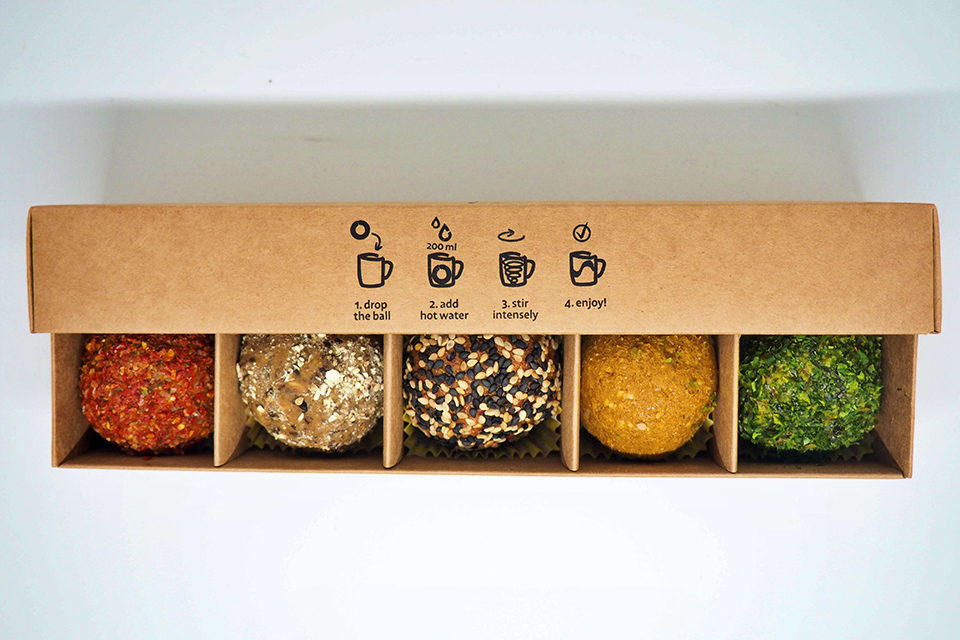

In the Nordic country of Denmark with its long, cold winters, fermentation has for centuries served as a technique for preserving foods. Ono Minaka, a graduate in integrated health sciences from the University of Tokyo, came across miso balls in that country when doing her master’s in food science at the University of Copenhagen. They were made by a young Polish entrepreneur.
Here Minaka interviews the inventor of miso balls, Mac Krol, and reports from the ground on the Danish fermentation scene. Why miso in Denmark? What do Danes think of it?
Minaka became interested in nutrition after she entered the University of Tokyo Beauty Pageant, which got her thinking about how to build a healthy body through diet. Since 2021, she has been doing graduate work at the University of Copenhagen in Denmark. There she studies food science in a more everyday context.
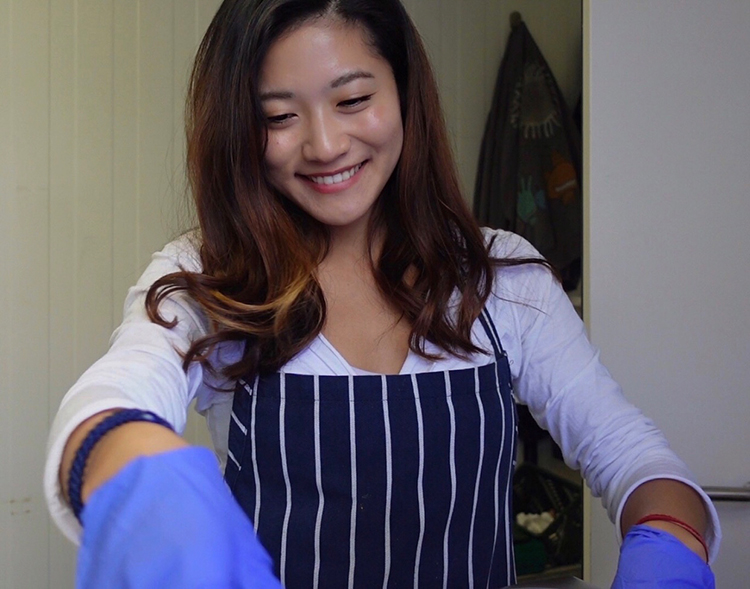
Ono Minaka, currently a graduate student at the University of Copenhagen
“My grandmother’s home is in a remote area of Mie Prefecture, and I was brought up close to nature from my earliest years. We would pick wild herbs when we went for walks, and we would make yogurt and enzymes together by hand. We also made compost. My grandmother’s lifestyle may be the ultimate reason why I ended up on this path in life.”
The Danes, says Minaka, “are somewhat self-effacing, and many of them have a craftsmanlike bent. They really get into what interests them.” They resemble the Japanese in that regard, she finds, despite the cultural differences, so she’s enjoying her sojourn. She first came across Mac Krol, who had studied food science at the same university, on social media.
“When I saw him making miso, I contacted him immediately. It was gratifying to see a traditional Japanese food like miso being given a new twist by someone who wasn’t even Japanese.”
Denmark has a long connection with fermentation, which has deep roots in the country as a technique for preserving foods. It’s the home of Noma, famous for using fermented foods in all the dishes it serves, which has repeatedly been named the world’s best restaurant. Still, miso is little known in the country. So how did Mac end up inventing miso balls?
Here we bring you Minaka’s interview with him.
MINAKA: Maybe you could start with your personal history.
MAC: I have experience working as a chef in kitchens in many different countries. I started out in New Zealand, then went on to work in the United States, Panama, Sweden, and Poland. I first learned about fermentation techniques in 2016, when I was in Panama. I enrolled in the master’s program in food science at the University of Copenhagen in 2018; then, in 2021, I launched my own company specializing in making white miso. It’s called mac.ferments. I start each day at around twelve making koji, preparing miso for fermentation, and packing and shipping products and orders. I’m doing what I love, so every day is truly rewarding, whether it’s just another day or really hectic.
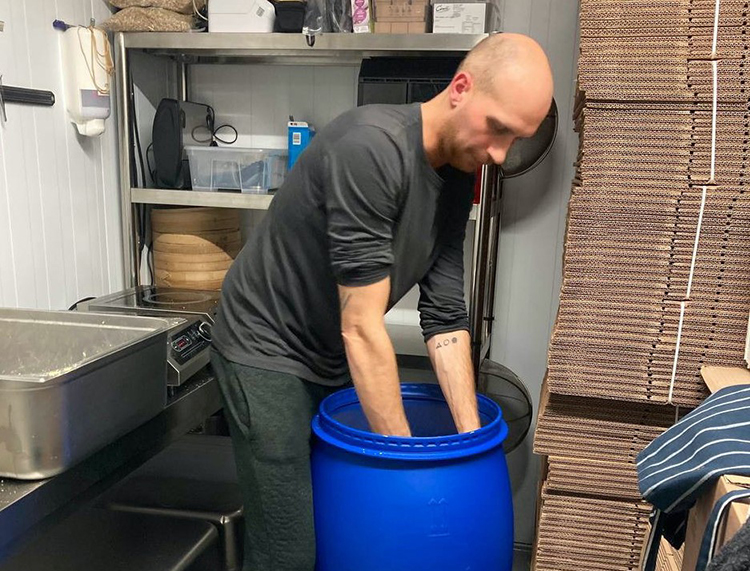
Mac preparing miso for fermenting
MINAKA: What fascinates you about fermentation?
MAC: My boss in Panama, who took me under their wing, taught me about low-temperature pasteurization of banana vinegar. They also introduced me to fermented foods like kombucha, kimchi, and miso.
Soon after that, I made my first miso using beach plants and rice koji. I’ve been in love with the fermentation process ever since. I started regularly eating fermented foods myself, and I felt a lot better for it. Not only did I start sleeping better, but my mental and physical performance improved as well. I was more contented and felt more positive about myself.
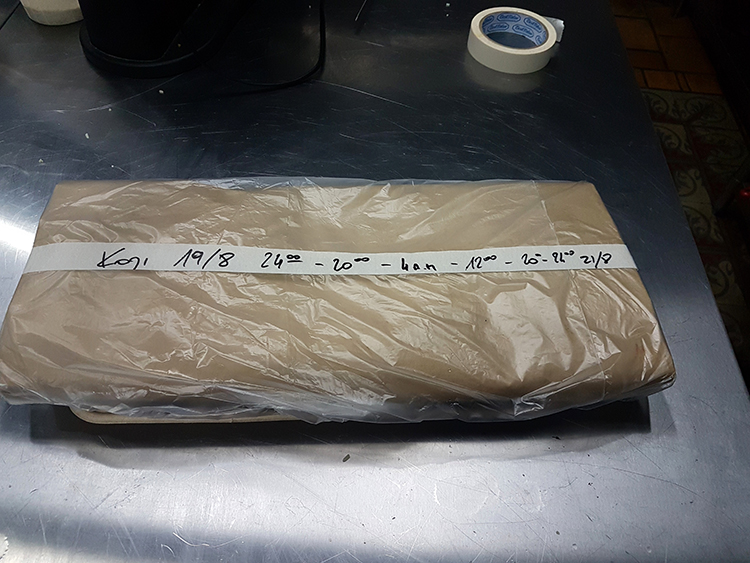
Mac’s first koji miso, made in Panama
MINAKA: Denmark has a deep connection to fermented foods, right?
MAC: Denmark has world-class restaurants like Noma, Alchemist, and Amass, which each have a specialized knowledge of fermentation.
Danish consumers have high expectations of fermented foods, and there’s an openness to innovative fermented foods. I therefore thought this was the right place for me to study and gain experience. I started out mapping and highlighting the activities of each fermented food producer in Denmark, and that evolved into my present company.
MINAKA: Do you feel that miso is well known in Denmark?
MAC: There are lots of small-scale producers of fermented foods like tempeh, kombucha, and vinegar, but I feel that fermenting with koji is still something new.
During the March 2020 lockdown, I worked on making different types of miso at home. I then handed it out to my friends enrolled in the entrepreneurship program at university and their family members, and conducted a market survey. When people got the miso, the first thing they would ask was, “What am I supposed to do with this? How do I use it?”
I immediately realized that bringing miso to more people would require making miso easy to use in dishes even without the requisite knowledge. So I developed miso balls, Europe’s first healthy instant soup.
All you have to do to enjoy miso soup is drop the ball in a cup, add hot water, and stir. I was so happy when a Japanese living in Denmark told me it was the taste of home.
MINAKA: Your miso balls are completely made by hand, right?
MAC: The production process is semi-automated, using a bamboo steamer, a pressure cooker, and a koji incubator made from a modified container for growing plants. But mixing the miso and putting it in the barrel is all done by hand.
I insist on zero waste. For example, the aquafaba in which the beans have been cooked is all mixed with koji and salt and fermented to make what I call “recycled umami sauce.”
I’m also trying my hand at making as many different varieties of miso as I can using a wide range of beans. To date, I’ve developed more than fifteen types of white miso using legumes like yellow peas, chickpeas, and black soybeans and flavors like tomato, mushroom, seaweed, black garlic, and rose.
Chefs and food manufacturers sometimes use miso balls straight out of the box as a seasoning. Seeing what they do with the balls often gives me new ideas.
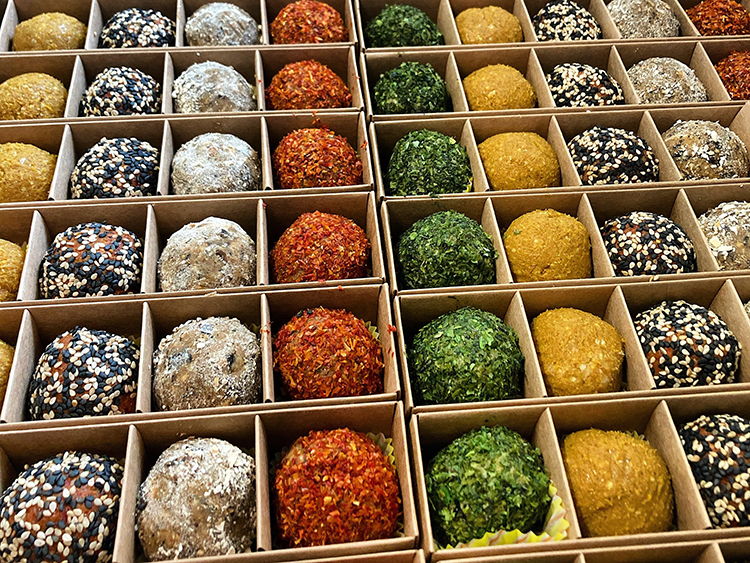
Mac’s miso balls are also a treat for the eye.
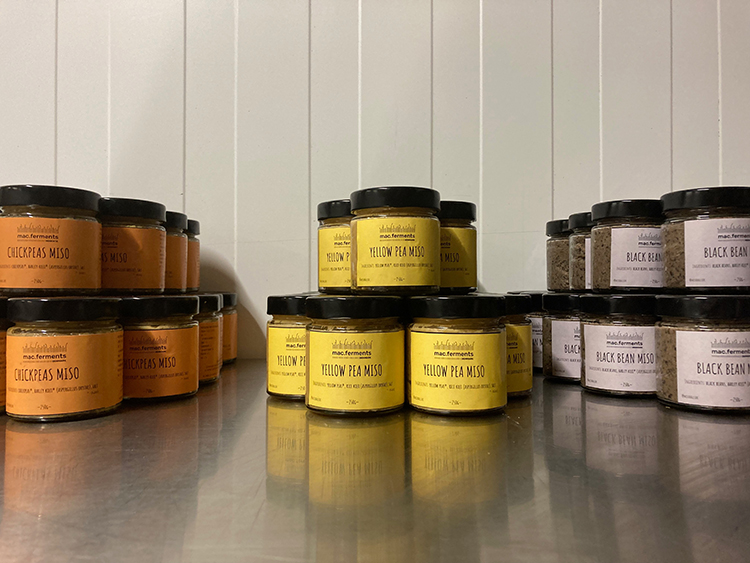
The miso Mac sells
MINAKA: I understand that right now, most of your sales are to companies and restaurants. Hopefully miso balls will catch on among the general public as well.
MAC: I sell directly to consumers through my online store, but a lot of people, I feel, are still unsure about miso and how to use it. I therefore explain its uses in workshops and get people to try dishes made with it.
Many people are amazed at how rich miso tastes when they actually try it. I hope to make a bigger impact by penetrating the market further. Many areas of koji and miso making are still undeveloped. While gradually familiarizing Danes with miso, I intend to start bringing them things like amazake and tamari sauce as well.
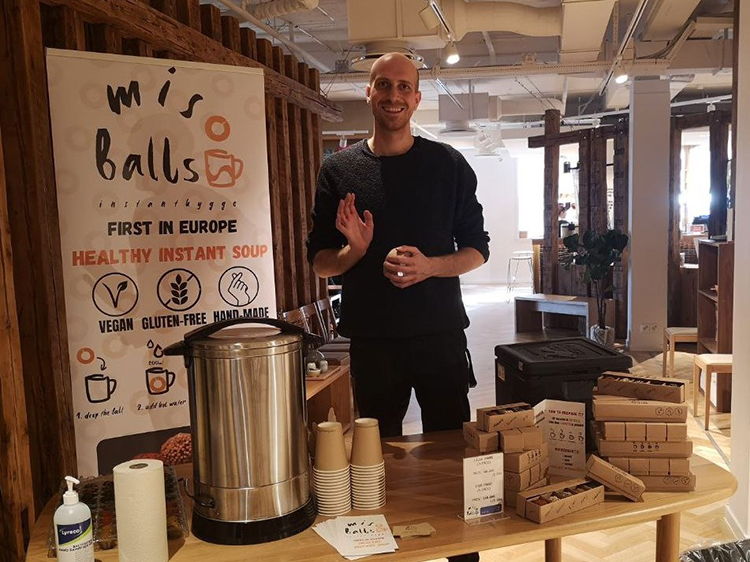
A miso tasting session in Denmark
Far, far away in Denmark, there’s someone so enamored of miso that they’re working hard to make it better known. It seems somehow strange, but as a Japanese, it’s also deeply gratifying.
Let’s look forward to the day when Mac’s miso balls and the new forms of miso he’s working on became a staple of Danish food culture.

Born in 1999, Minaka is a native of Aichi Prefecture. A graduate of the School of Integrated Health Sciences of the University of Tokyo Faculty of Medicine, she has been enrolled in the master’s program in food science at the University of Copenhagen in Denmark since 2021. Her hobby is yoga, and she’s mad about brown rice and miso soup.

After working as a chef in New Zealand, Mac gained experience in the United States, Panama, Sweden, and Poland. During that time, in 2016, he fell in love with fermentation technology. After relocating to Denmark in 2018, he completed his master’s in food science at the University of Copenhagen. In 2021, he launched mac.ferments, which specializes in making white miso. He is the inventor and seller of miso balls, an easy way to enjoy miso soup.